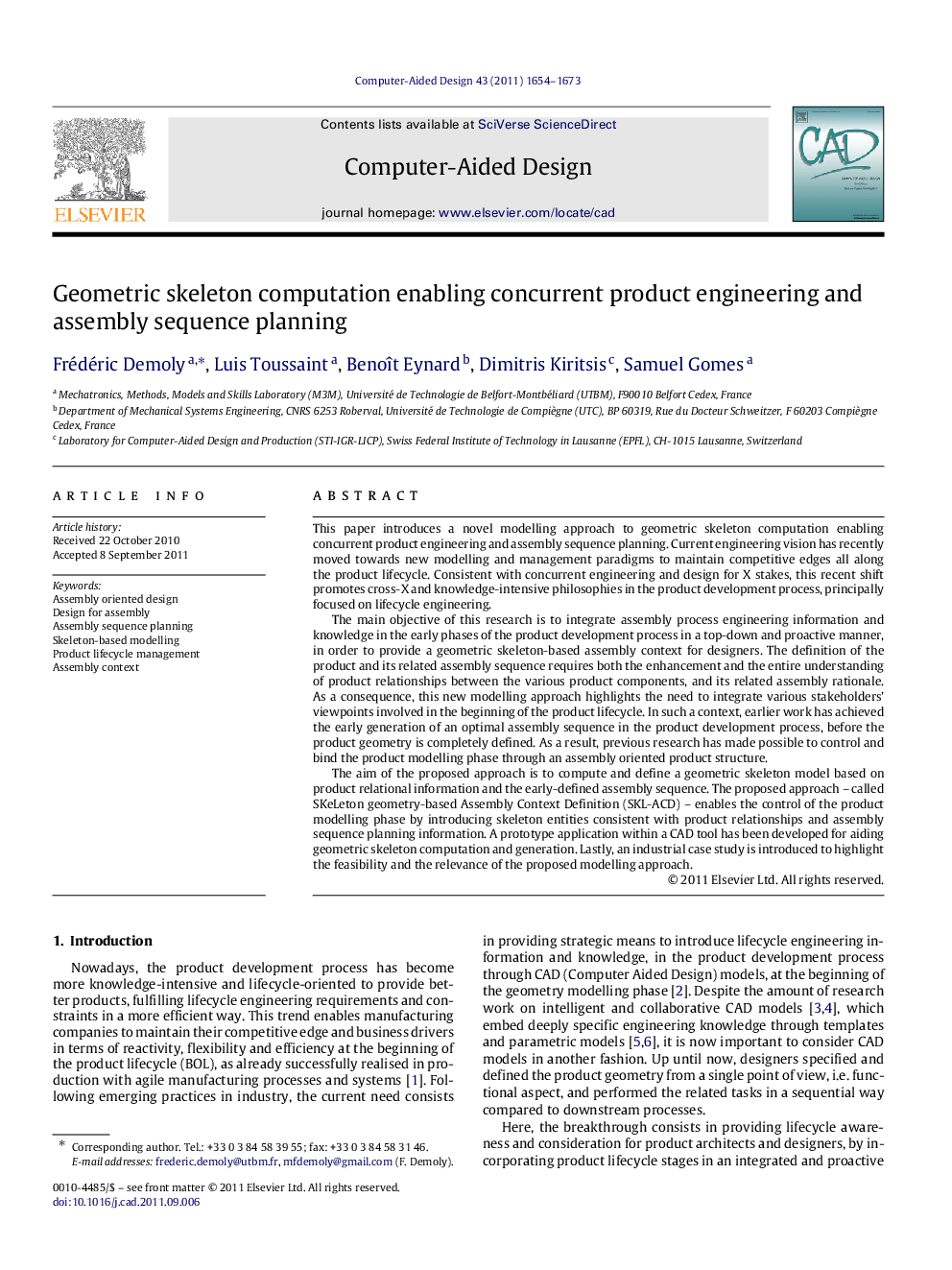| Article ID | Journal | Published Year | Pages | File Type |
|---|---|---|---|---|
| 440199 | Computer-Aided Design | 2011 | 20 Pages |
This paper introduces a novel modelling approach to geometric skeleton computation enabling concurrent product engineering and assembly sequence planning. Current engineering vision has recently moved towards new modelling and management paradigms to maintain competitive edges all along the product lifecycle. Consistent with concurrent engineering and design for X stakes, this recent shift promotes cross-X and knowledge-intensive philosophies in the product development process, principally focused on lifecycle engineering.The main objective of this research is to integrate assembly process engineering information and knowledge in the early phases of the product development process in a top-down and proactive manner, in order to provide a geometric skeleton-based assembly context for designers. The definition of the product and its related assembly sequence requires both the enhancement and the entire understanding of product relationships between the various product components, and its related assembly rationale. As a consequence, this new modelling approach highlights the need to integrate various stakeholders’ viewpoints involved in the beginning of the product lifecycle. In such a context, earlier work has achieved the early generation of an optimal assembly sequence in the product development process, before the product geometry is completely defined. As a result, previous research has made possible to control and bind the product modelling phase through an assembly oriented product structure.The aim of the proposed approach is to compute and define a geometric skeleton model based on product relational information and the early-defined assembly sequence. The proposed approach–called SKeLeton geometry-based Assembly Context Definition (SKL-ACD)–enables the control of the product modelling phase by introducing skeleton entities consistent with product relationships and assembly sequence planning information. A prototype application within a CAD tool has been developed for aiding geometric skeleton computation and generation. Lastly, an industrial case study is introduced to highlight the feasibility and the relevance of the proposed modelling approach.
► Geometric skeleton computation for concurrent product design and assembly planning. ► An assembly skeleton model based on product relations and assembly sequence. ► Development of a new CAD application to manage assembly skeleton entities.
